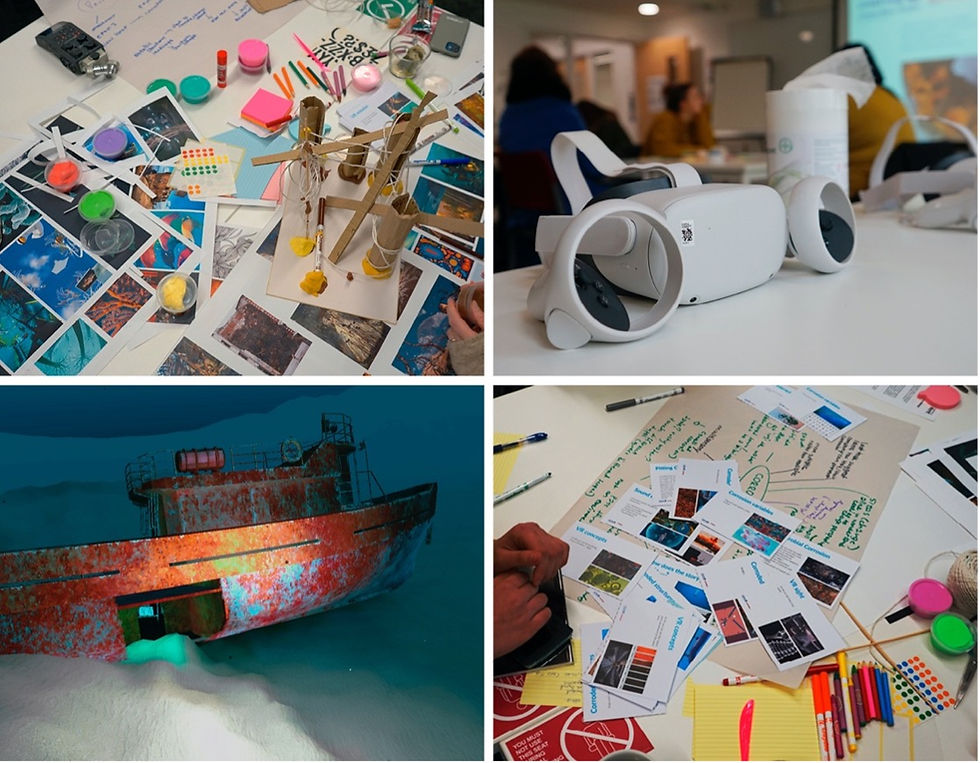The virtual reality of corrosion - SOCORRO VR co-design workshop
- Marjolein Vanoppen

- 26 jan 2022
- 2 minuten om te lezen
Bijgewerkt op: 7 jun 2023

The power of extended realities such as augmented reality (AR) and virtual reality (VR) far surpass their entertainment value. The team at the University of Kent (UoK) is responsible for the communication of SOCORRO’s research and its outcomes. One of the planned communication activities is a traveling exhibition. As part of the exhibition, the team has proposed a VR experience with the goal of exciting visitors about the subject of corrosion and the scientific approaches that are available to manage it. To conceptualise this VR experience, the UoK team recently conducted a co-design workshop.

The objective of using VR as a medium for science communication is to use its potential to offer immersive experiences while explaining complex issues, such as corrosion caused by metal's interaction with water. VR allows the audience to experience the problems and interact with the theme of corrosion virtually. This technology engages the audience to the topic of corrosion and sets a context for further investigation. This is incredibly useful to communicate complex scientific research since it makes the information accessible to a varied and wider audience.
The goal of the workshop was to use the power of collective thinking to arrive at compelling and captivating methods of communicating the causes of and the damage caused by corrosion. The workshop was conducted over a period of 3 hours with 9 participants from backgrounds ranging from architecture to creative writing, interaction design, VR development and engineering. Participants were divided into 3 teams. The workshop employed a variety of tools to spark off different stages of creative thinking:
- Understanding the subject and design concerns through issue cards,
- Brainstorming and narrative making,
- Visualising sensory aspects of the experience through mood-boards,
- Concretising ideas through 3D physical model making,
- And feedback and discussion.
The use of community and collaborative thinking in VR design was very beneficial. Working in groups, with individuals from diverse backgrounds and experiences resulted in interesting creative ideas. This is vital to push forward boundaries of historic design methods in science communication. The workshop led to the development of three distinct ideas that could possibly be used to communicate the importance of corrosion. They ranged from immersive worlds corroding and collapsing around the user to underwater labs, where the user can interact with the 4 main types of corrosion explored by the scientists of the SOCORRO project.
The next steps will Include collecting feedback from the research team to finalise the idea and prototype this for further testing.





Opmerkingen